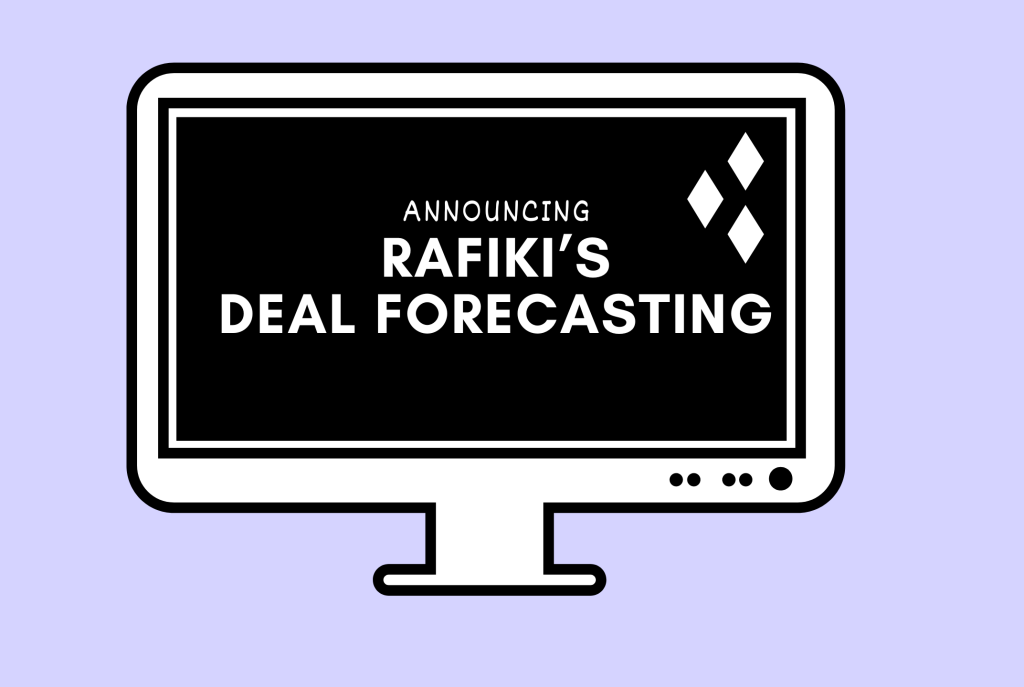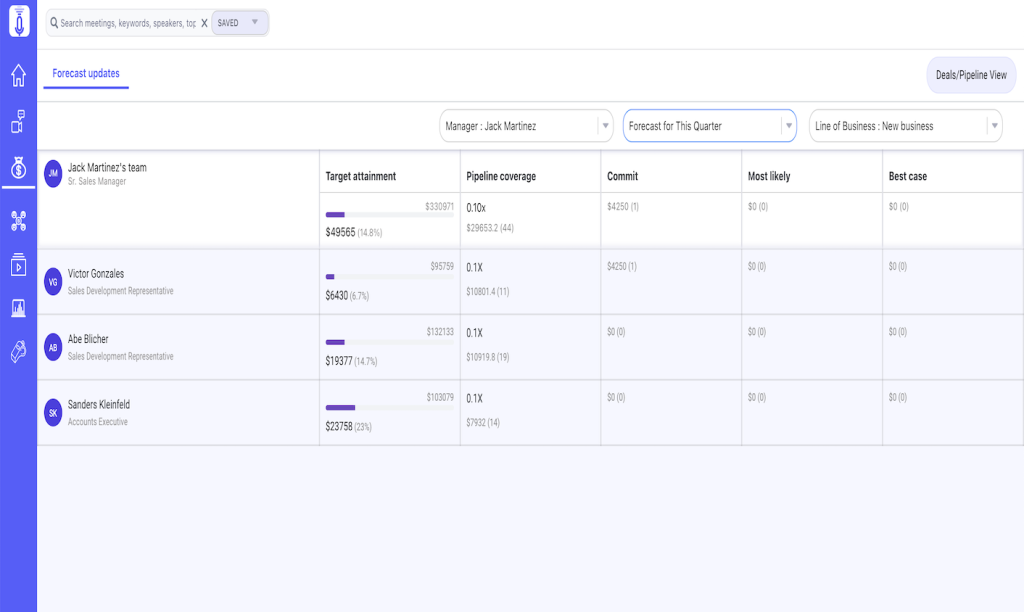Why Rafiki
Pricing


Pricing
Solutions

RevOps Leaders
Synchronize revenue generating functions

SDR Leaders
Get your team aligned and Coach your Reps 3x faster at scale

Sales Leaders
Unlock pipeline truth, drive confident forecasts

In the pursuit of maximizing profitability, leaders are often confronted with critical inquiries:
The inability to answer these questions typically stems from one of two issues:
Accurate revenue forecasting stands as a cornerstone for business success, providing sales and customer success teams with forward-looking insights, enabling them to meet revenue goals consistently, and fostering overall revenue expansion. Understanding Revenue Forecasting
Revenue forecasting involves estimating the total revenue pipeline, including both new sales and expansion revenue from existing customers, that your teams anticipate securing as actual revenue over a specific timeframe.
Despite widespread acknowledgment of its significance, achieving precise revenue forecasts remains a challenge for many, with only 45% of sales leaders expressing confidence in their forecast accuracy.
This skepticism largely arises from the methodologies employed in forecasting workflows. Traditional practices rely heavily on spreadsheets or CRMs, leading to several pitfalls:
Manual entry into spreadsheets or CRMs is not only tedious but also diverts your team's focus from their core activities—engaging with prospects and clients, closing deals, and generating revenue.
Here's the takeaway:
Now there's a better way to revenue forecasting now exists: Integrating AI-driven insights gleaned from customer interactions with sales data from your CRM.
With Rafiki Deal Forecasting, leaders in sales and customer success can corroborate their revenue projections using up-to-the-minute information regarding the status of deals in their pipeline. Insights powered by Rafiki enable them to tackle queries such as
'What basis do we have for this forecast?',
'Is this target attainable?'
'What obstacles might hinder us from reaching this target?'.

After establishing the forecast and setting the team on its course to fulfillment, sales and customer success leaders can monitor their team’s progress in revenue achievement meticulously.
The Forecasting dashboard provided by Rafiki allows leaders to:
(i) Pinpoint which deals should be given precedence,
(ii) Identify deals that are in jeopardy, and
(iii) Address potential impediments to meeting their revenue goals.
Traditional tools like spreadsheets or CRMs fall short in delivering such essential insights about your pipeline's deals.
This is the rationale behind creating the Rafiki Deal Forecasting Dashboard - a unified platform that tracks your CRM data, revenue objectives across various pipelines, and insights from client interactions in real-time.
In conclusion, the journey towards accurate revenue forecasting is pivotal for the sustained success and growth of any business. Embracing AI-driven insights from customer interactions and integrating them with CRM data heralds a new era in strategic planning and decision-making.
With tools like Rafiki Deal Forecasting, businesses can transcend traditional limitations, unlocking a clearer, more reliable pathway to achieving revenue targets. This not only enhances the precision of forecasts but also equips sales and success leaders with the tools they need to proactively manage their pipelines, prioritize effectively, and mitigate risks with confidence.
As we move forward, leveraging technology to refine revenue forecasting processes will be indispensable for businesses aiming to thrive in an increasingly competitive and dynamic market landscape.